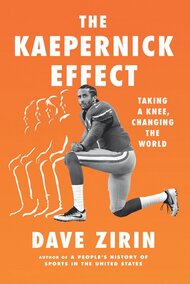The End of the New York Times Sports Page Is a Tragedy

The logo of The New York Times hangs above the entrance to its building. The Times is getting rid of its sports department and will instead rely on sports coverage from its website The Athletic going forward. (Mark Lennihan / AP Photo)
In a union-busting move, the most important newspaper in the country killed its sports page.
I am grateful to my mom for many things, not the least of which is making sure that the New York Post and The New York Times were in the kitchen to start every day. (Her unexplained grudges against the New York Daily News and Newsday remain a mystery.) I neither knew nor cared about the politics of either paper. My priority was the sports pages, and I read them every morning. Even as a kid, I could grasp the stylistic differences between the two sections. The Post was pugnacious and bare-knuckled—a forerunner of the worst and most addictive parts of social media. Snide barbs abounded, and legends like Dick Young, Budd Schulberg, and the ultimate insult columnist Peter Vecsey ruled the roost. The Times articles were more like reading a series of opening chapters to great books. When they were about sports I didn’t even watch, like hockey, I’d read every word, wishing for a chapter two. The papers had fantastic reporters like Selena Roberts and Harvey Araton, and their columnists were literary giants, like George Vecsey and Pulitzer Prize winner Dave Anderson. Vecsey in his spare time wrote the book Coal Miner’s Daughter, which became an Oscar-winning film, and he is, improbably, Peter Vecsey’s brother. (It’s the columnist version of the movie Twins.)
I read the Post more voraciously, but my dream was to be a good enough journalist to write about sports for The New York Times. It would have felt like getting a work of art into a museum. Now, that sports section is gone. The New York Times shuttered its sports page, a victim of greed and union busting. This announcement came hours after a similar one from the Los Angeles Times that it would be closing its doors to sports coverage as well. As Boston Globe senior columnist Bob Ryan wrote, July 10 is “a day that will live in infamy” for anyone who cares about sports writing as a profession. The New York Times will replace its sports coverage with the website The Athletic, which it purchased for $550 million 18 months ago in an effort to boost its own subscription base. Now, another side of the attractiveness of The Athletic purchase is revealing itself. The staff there is nonunion. Mere weeks after a contentious labor battle that put Times management on its heels, a section of the union has been gutted. In a rather nauseating statement on the closure, New York Times Chairman A.G. Sulzberger and CEO Meredith Kopit Levien said that this was all part of a bigger plan “to become a global leader in sports journalism, which represents a major pillar of our company strategy to be the essential subscription for curious people around the world.” How one becomes a “global leader in sports journalism” by blithely wrecking your sports page and outsourcing the labor away from deep-dive coverage is a question they should be pressed to answer.
Not surprisingly, this move toward being a “global leader” was not cheered by The New York Times’ union, the NewsGuild. In a statement to the press, it said that the sports journalists were informed about the closure by a news alert on their phone. The union called it a “flagrant attempt at union-busting.” It went on to say, “This announcement is a profound betrayal of our colleagues and of Times values. Times leadership is attempting to outsource union jobs on our sports desk to a non-union Times subsidiary under the preposterous argument that The Times can ‘subcontract’ its sports coverage to itself.”
It all brings to mind something I came across recently: the October 23, 1978, issue of The Not New York Times, a parodic solidarity strike paper put together by Christopher Cerf, George Plimpton, Freddy Plimpton, Rusty Unger, and Tony Hendra during the 1978 newspaper strike, when 10,000 workers from multiple newspaper unions and newspapers went out on strike. The Not New York Times is a near-exact replica of the Times, except, like a forerunner to The Onion, it is packed with satirical headlines and stories mocking the style and politics of the Gray Lady. Examples include fall season thrown into confusion by studio 54 blaze: israeli reaction muted.
As one might expect from people like the Plimptons and Hendra, one of the minds behind National Lampoon and Spinal Tap, it’s very witty and stiletto-sharp. The sports page parody section is hilarious, with stories about jockeys being “put down” after horse races and outrage after the NFL turns to the metric system. It all recalls that time in 1978 when newspaper workers aggressively and boldly defended their standard of living. Now, for the sports page, there is no standard of living to defend.
A terrible irony of all this is that this has been a week when sports journalists at Northwestern University have been lauded for breaking a story about hazing on the football team, which led to the the firing of longtime head coach Pat Fitzgerald. Unfortunately, the success of the young writers inspired Stewart Mandel, the editor in chief for college football at The Athletic, to wax rhapsodic about the emerging talent on display while at the same time diminishing the week’s bloodbath. He tweeted with an extremely ill-timed blasé air, “Don’t be fooled by the cranky ‘sports journalism is dying’ tweets. The future has never been brighter, because the talent I’ve seen coming out of colleges over the past several years has never been stronger.”
That rah-rah tweet ignores the glaring question: Where are all these talented sports writers out of college supposed to work? The Los Angeles Times and The New York Times are trendsetter papers, and we can expect sports to broadly be the next section of your local paper on the chopping block. Meanwhile, every team owner aiming to soak a city of its tax dollars, every coach with an ugly past, and every commissioner making side deals with bad-faith actors is breathing easier today. The old saying is that a good journalist should “afflict the comfortable and comfort the afflicted.” The comfortable are already way too comfortable, and they aim to stay that way.
More columns ⇒
Support the Work
Please consider making a donation to keep this site going.
Featured Videos
Dave on Democracy Now!

